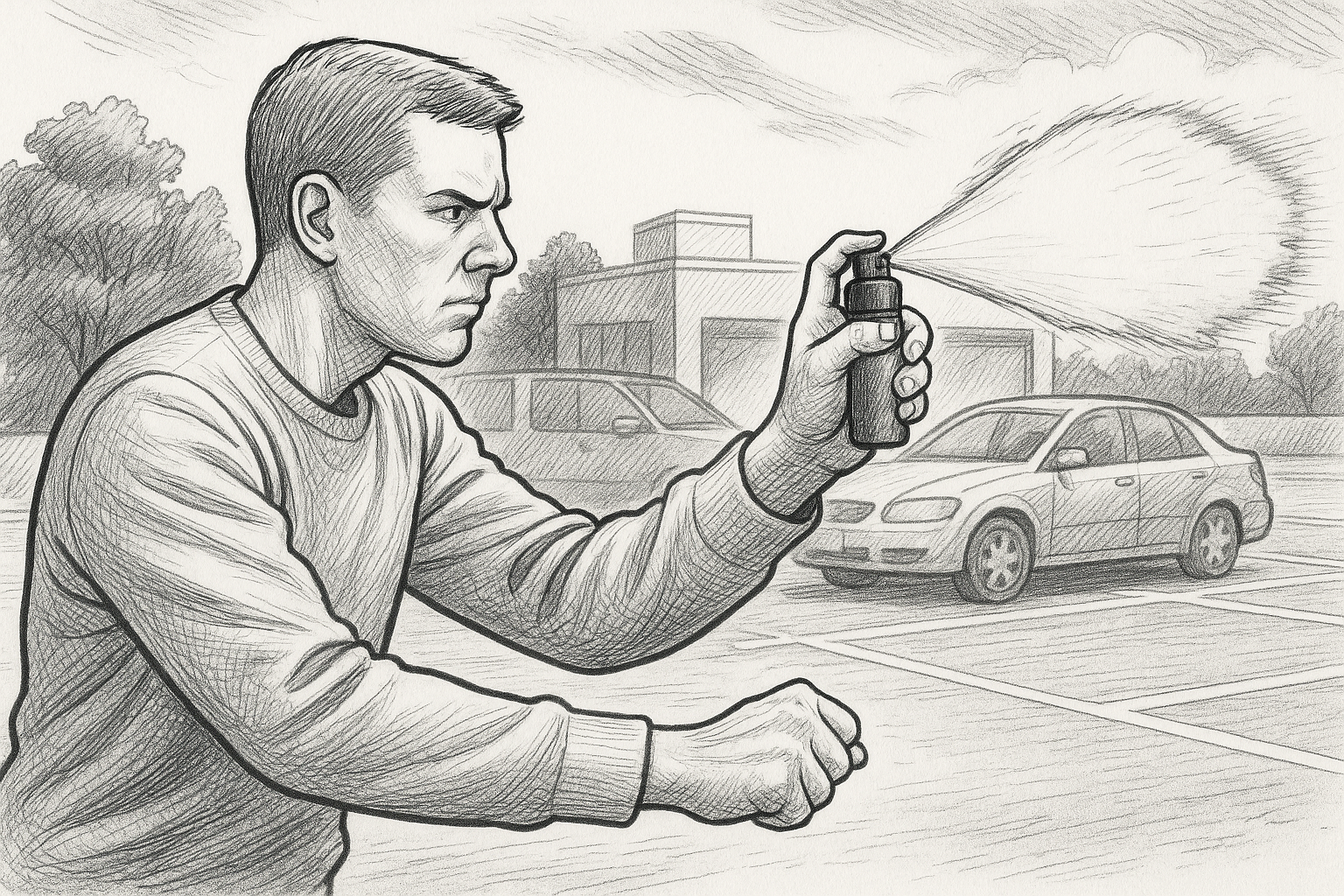What Is Pepper Spray?
Pepper spray, often called OC spray (short for oleoresin capsicum), is a less-lethal chemical compound designed to temporarily incapacitate an attacker.
It causes intense burning, involuntary eye closure, coughing, difficulty breathing, and disorientation.
The main active ingredient, capsaicin, is extracted from chili peppers and suspended in a pressurized delivery system.
It’s used by civilians for personal defense, law enforcement for control tactics, and in some cases by military units for non-lethal engagement.
Is It Legal in Your State?
In most U.S. states, civilians can carry pepper spray or OC spray with few restrictions.
However, there are important variations:
- Massachusetts: Must purchase through licensed firearms dealers.
- New York: Must buy from authorized local dealers and for self-defense only.
- California: Canisters must be 2.5 oz or smaller.
- Michigan: Strength is capped at 10% OC with no tear gas mixtures.
- Wisconsin: Must contain a safety mechanism; size and strength restrictions apply.
Pepper Spray State Laws Resource (U.S. Law Shield)
Always check with local law enforcement or a legal expert before carrying.
Types of Pepper Spray
Choosing the right spray format depends on your environment, comfort level, and risk tolerance:
- Stream – Long-range (10–15 feet), low cross-contamination risk. Best for outdoor use.
- Fog/Cloud – Wide dispersion, effective against multiple attackers, but higher blowback risk. Best in open air with distance.
- Gel – Thicker stream, less likely to affect bystanders or blow back. Ideal for indoor or close-range situations.
- Foam – Expands on contact, excellent for close range, but can be smeared if the attacker touches it.
How to Carry & Use It
Carry Tips:
- Keep it accessible (front pocket, belt clip, purse flap…not buried).
- Choose models with a safety flip or twist top to avoid accidental discharge.
- Practice drawing and aiming without deploying.
How to Use It
Pepper spray is simple, but under stress, even simple things go sideways. Here’s how to use it effectively:
- Grip Properly: Hold it in your dominant hand, thumb on top or index finger on the trigger, whichever the canister is designed for. Keep it pointed forward and upright.
- Keep Distance: Ideal spray range is 4 to 12 feet depending on the type. Don’t wait until someone is within arm’s reach.
- Aim for the Eyes: That’s where it causes the most disruption. Quick horizontal sweeps across the face are effective.
- Spray in Short Bursts: Use half-second to one-second bursts. Don’t empty the can all at once. Conserve it in case more is needed.
- Move Immediately: After spraying, create distance and get to safety. Spray and retreat. Don’t stay to see what happens.
- Yell for Help: Draw attention to the situation if possible. A loud command like “Back off!” or “Stop!” can both warn others and bolster your legal defense.
- Practice the Draw: Know where it is on your body and be able to get to it fast. Fumbling costs time.
Note: Wind matters. Spray into it and you’ll get a dose too. Position yourself smartly.
What Happens After:
- OC spray generally wears off in 30–45 minutes.
- In many jurisdictions, you’re legally obligated to call authorities and explain your use of force.
- Expect that law enforcement may question your actions, even in justified cases.
Real-World Examples
- 2020 Riots & Protests: Both civilians and police used pepper spray during demonstrations. Civilian carriers reported success in stopping aggressive individuals, but also faced legal scrutiny in certain jurisdictions.
- Home Invasion Case (Texas, 2023): A woman used gel spray through a cracked door to stop a would-be intruder before police arrived. No charges were filed, and the action was ruled justified.
- Public Transit Incident (NYC, 2022): Pepper spray was deployed during a crowded train confrontation, affecting bystanders. Legal action was taken due to indiscriminate use.
Training Matters
You don’t need a permit in most states, but responsible carry still requires preparation:
- Practice deploying with inert (water-based) canisters available online.
- Learn the wind direction before use outdoors.
- Understand that not all attackers will react the same, some may fight through the pain.
Final Thoughts
Pepper spray is one of the most accessible and effective less-lethal tools available to civilians, but with that accessibility comes responsibility.
Know your state’s laws, practice with your gear, and understand when its use is justified.
This isn’t just about having a tool, it’s about knowing when and how to use it. And in the right hands, OC spray can mean the difference between becoming a victim and walking away unharmed.
Disclaimer: This article is for informational purposes only and does not constitute legal advice. Laws may change or vary by locality. Always verify current regulations in your jurisdiction before carrying or using any self-defense tool.

